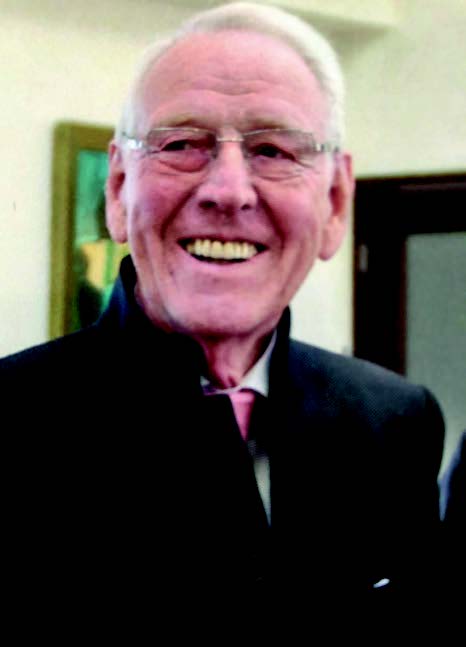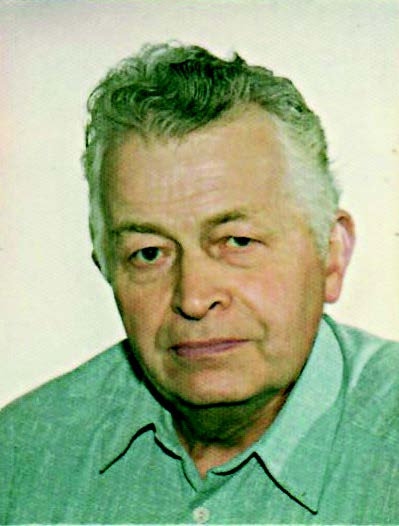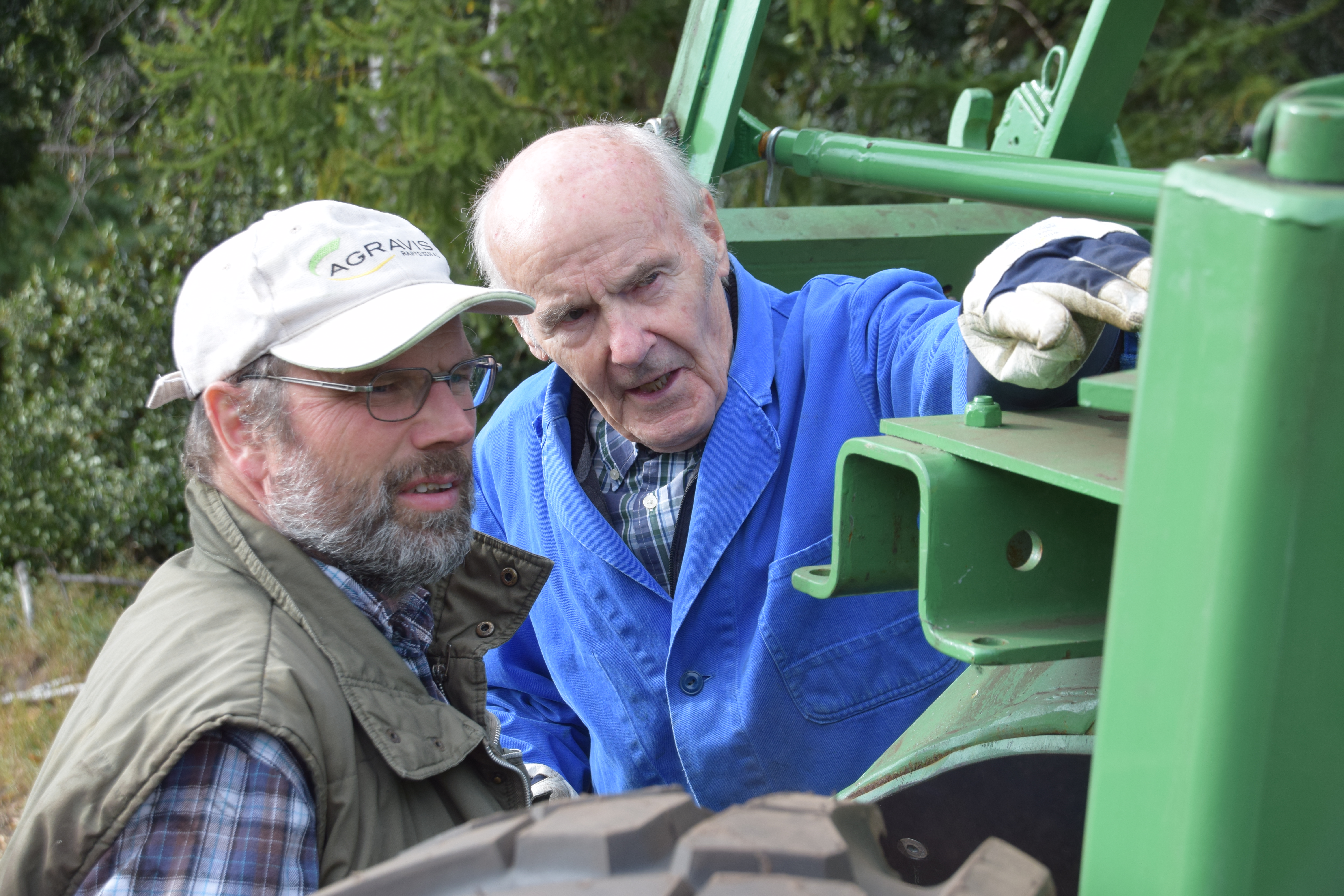Dr. Bernard Krone
Bernard Krone Holding SE & Co. KG???????
“When we first met as young men, we disagreed on how to shape our side of Weichel’s loader wagon invention.
Hans was right.
For me, it was just another confirmation that my inventive skills were not up to par.
?

It was different with Hans. He was a serial inventor. In other words, Mr. Rudolf Diesel or the loader wagon inventor Ernst Weichel once made a great invention, but everything they invented afterwards was not a success.
With Hans it was different. In addition to building up his company, in which he was greatly supported by his lovely wife, he always had interesting ideas to make life easier for his farming customers. This led not only to numerous patents, but also – not always a matter of course – to successful products manufactured in-house or under license.
Especially the patented first silo block cutter on the market was a breakthrough to own large-scale production. Our agricultural machinery business has benefited from this for many years as well. Technical problems were almost non-existent.
New groundbreaking ideas and products were developed around livestock feeding.
My friend Hans still is an inventor.
It is a pity that at 80 years old, the two of us perhaps are a bit too old to launch something together to the surprise of our colleagues again.
I wish Hans and his wife, who has been extraordinarily caring for him for so long, a continued healthy and shared journey through life.”


Georg Löbbers, Franz Josef Jansing
“Every life story, every biography is as unique and as distinctive as the person himself. For example, when people are born on a farm, they have a great advantage. They grew up experiencing how things come into being, grow and pass away.
Both the environment and the mind are healthy. They have the best conditions to master life without much external influence.
Such lucky devils are Hans von der Heide and his wife Rosi. They both possess the above-mentioned prerequisites. Since our start into self-employment, we had the opportunity to advise the two in tax, business management, and personal matters over decades. In the jungle of tax law, and especially in the organization of inventor regulations, it was a joy to achieve successes.

A small handicraft business for agricultural machines developed into a very successful manufacturing company resulting from its many innovations.
Hans von der Heide has always remained a man with clear ideas, combining morals and ethics. We have walked a long way together with Hans and Rosi von der Heide.
Admirable were the technical considerations that demanded respect and appreciation. These have not diminished over many decades and each new visit brought new ideas and surprises about the inventive spirit of Hans von der Heide.
But just as admirable was – and still is today – the support Rosi von der Heide gave her husband in all his work.
Without great titles, the truly healthy spirit was the master of the conversations here. Throughout the decades, amicable connections have developed that illuminate the lifetime’s work of the married couple Hans and Rosi von der Heide.
Respect, recognition and thanks are our contribution to this work.“


Reinhold Kitten
Farmer
“In the 1960s a total changeover from hay feeding to grass silage took place on cattle farms.
First of all, the new technology of loader wagons made hay harvesting much easier and quickly became established in practice.
The loader wagons became more technically advanced all the time and triggered a development towards the production of grass silage instead of hay harvesting, which was much more dependent on the weather. When the first forage harvesters came into use, this development could no longer be stopped.
At the same time in these years, the cultivation of silage corn also took a tremendous upward turn. From around the beginning to the middle of the 1970s, cattle were fed almost exclusively on grass and corn silage. From then on, ensiling was increasingly carried out in flat or mobile silos.
Still the (sparing) feed removal from the driving silos and also the distribution on the feed table in the barn was heavy work and needed a technical solution.
This problem was excellently solved by Hans von der Heide from Laggenbeck with an ingenious invention. He invented and developed the silo block cutter, which was then improved and supplemented by a hold-down device and was then a complete solution for feed removal and transport to the feed table. A tremendous simplification of work.
Within a short period of time, this invention was in great demand throughout Europe and even in foreign Japan. Several companies manufactured the block cutters under license.
Furthermore, Hans von der Heide developed a feed distribution wagon and later also build feed mixing wagons with completely new technology, for which he also received the highest awards. He initiated a development that is now the standard in cattle feeding.
Hans von der Heide’s ingenious ideas and inventions were absolutely pioneering for livestock farms, and the agricultural sector owes him a debt of gratitude and recognition.
Of course, the same appreciation and recognition applies to his wife Rosi. Through her management of office and accounting she has supported, influenced, and contributed to the development of the von der Heide company.

Dr.-Ing. Johann Rumpler
Saxony-Anhalt-State-Institute for Agriculture and Horticulture
“Hundreds of events every year present historical and modern agriculture and agricultural technology to hundreds of thousands of interested visitors with a growing tendency.

Most of them are enthused and fascinated by the functional simplicity of agricultural machinery and equipment, based on ingenious technical details, which are modern today, but can often be classified as milestones in the history of agricultural development.
Few, however, question the people behind such ingenious inventions or even know one of these people personally.
Well, the reader can get to know one here. Moreover, one who can organize his restless striving and work over eight decades not only in terms of years and stages of life, but also in terms of patent numbers! A journey through time that is as exciting as it is lively, during which one is pleased to pay respect not only to the resourceful technician, but also to the human being, the family man.
War, expulsion, rather makeshift schooling, master craftsman’s diploma in self-study and then setting a milestone in the history of agricultural engineering with the first invention, that was and is certainly not normal, but logical!
For anyone who had the opportunity to get to know this Hans von der Heide, even if it was only in the fall of 2016, must attest to this restless and contentious spirit extraordinary commitment up into his eighth decade of life.
The way he described his improved short plow in front of 150 practitioners and scientists at the age of almost eighty and of course with a slightly trembling voice, and then presented the plow in a thin blue coat, shivering in the field, probably left no one untouched on that day, even if the practical use was not possible because of the frozen ground!
It is precisely this very figuratively chosen description in the example that probably illustrates the message of the presented lifetime achievement clearest – to drive forward goals recognized as progress with heart and soul!
One can only wish that this journey through time reaches many, and that especially young, enthusiastic readers get their hands on it! To appreciate such achievements, to be inspired and to put their heart into implementing their visions!
So that the pioneering role of local agricultural technology, which has been acquired over decades through such lifetimes of work, is preserved and so that in the future, people can still puzzle and ponder at historical agricultural technology events as to who is behind the ingenious details.”


Ralf Große-Endebrock
Farmer
“I have been particularly fortunate to have been able to accompany Hans and his inventions for a long time.
In the beginning, Hans tested his first silage block cutter on our farm. In the subsequent years, feed removal technology, feed distribution technology, feed mixers and many other things that make the farmer’s work easier followed.
All these devices were tested on our farm and developed by Hans to a point where they were ready for serial production. Due to his constant and intensive contact with the practice, the machines of the company von der Heide had such a great success.
I was also allowed to accompany the development of his parallel plow from the very beginning. I can still remember the day when Hans first presented his latest idea to me. “I’ve made a little model here – let’s have a look at it together,” were his first words.
He had thought about plowing and whether the conventional plow could be revolutionized. Using the small model, he explained to me the advantages of his plow, as compared to all plows known so far. In his typical manner, he had considered all issues in advance and had already worked out solutions for them. Sometime later, I was able to admire the first prototype. Subsequently, we extensively tested the plow in practical use. I was amazed to see how well his first prototype plowed.
I would like to thank Hans and also Rosi – who always supported us and took care for us – for allowing me to participate in his ingenious inventions for so many years and to be able to contribute on a small scale.”

